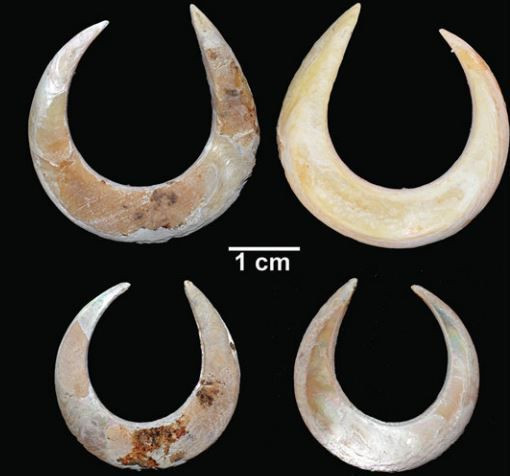Archeologists Discover Oldest Burial Fish Hooks, Showing Prehistoric Women Fished, Too

Prehistoric people did not conform to modern society’s ideas of which jobs belong to men and which belong to women. Archaeologists recently found evidence that 12,000 years ago, at least some women were fishing, even though that was previously believed to be largely a man’s activity.
The scientists say the fish hooks they found with a skeleton of a female from that time period are the oldest known ones involved in a burial ritual, according to a statement from Australian National University. But they are also important because of what they say about the way the earliest societies functioned: “The discovery turns on its head the theory that most fishing activities on these islands were carried out by men.”
There were five hooks found around the dead woman’s chin and jaw, made from a sea snail’s shell. Four of them are circular objects that are reminiscent of moon crescents and the other hook was shaped like the letter “J.” Burying this woman with the hooks speaks to how the society viewed the afterlife: They thought that being able to fish would have been essential for her.
“The association of the fish-hooks with a human burial, combined with the lack of alternative protein sources on the island, suggest that fishing was an important part of the cosmology of this community,” a study in the journal Antiquity explains. “The … burial represents the earliest-known example of a culture for whom fishing was clearly an important activity among both the living and the dead.”
According to the university, the next known use of fishing hooks at a burial site is only from about 9,000 years ago. Those were found in Siberia.
Fish hook artifacts have been dug up from sites dating back as far as 22,000 years, ANU said, but those were not linked to burial sites.
The newest find came from Alor Island in Indonesia, and researcher Sue O’Connor said in the university statement that they look similar to other rotating hooks used across the world during that time, suggesting prehistoric people developed this fishing technology separately.
“We argue that the same sort of artifact was developed independently because it was the most fitting form to suit the ecology, rather than through cultural diffusion,” she said.
It’s not the first time archaeologists have dug up evidence that showed ancient or prehistoric women played roles in their societies that have been seen in more recent times as men’s jobs, with those views skewing historical information about our ancestors. Earlier this year, researchers did a DNA analysis of a Viking warrior’s grave that proved it was a woman buried in the elaborate plot — not a man, as had been previously assumed. Although some narratives have described men and women fighting side by side as Viking warriors, the general view has been that these warriors were all men. The genetic analysis from the “well-furnished warrior grave” in Sweden, however, shows that at least one important fighter was female.

© Copyright IBTimes 2024. All rights reserved.





















